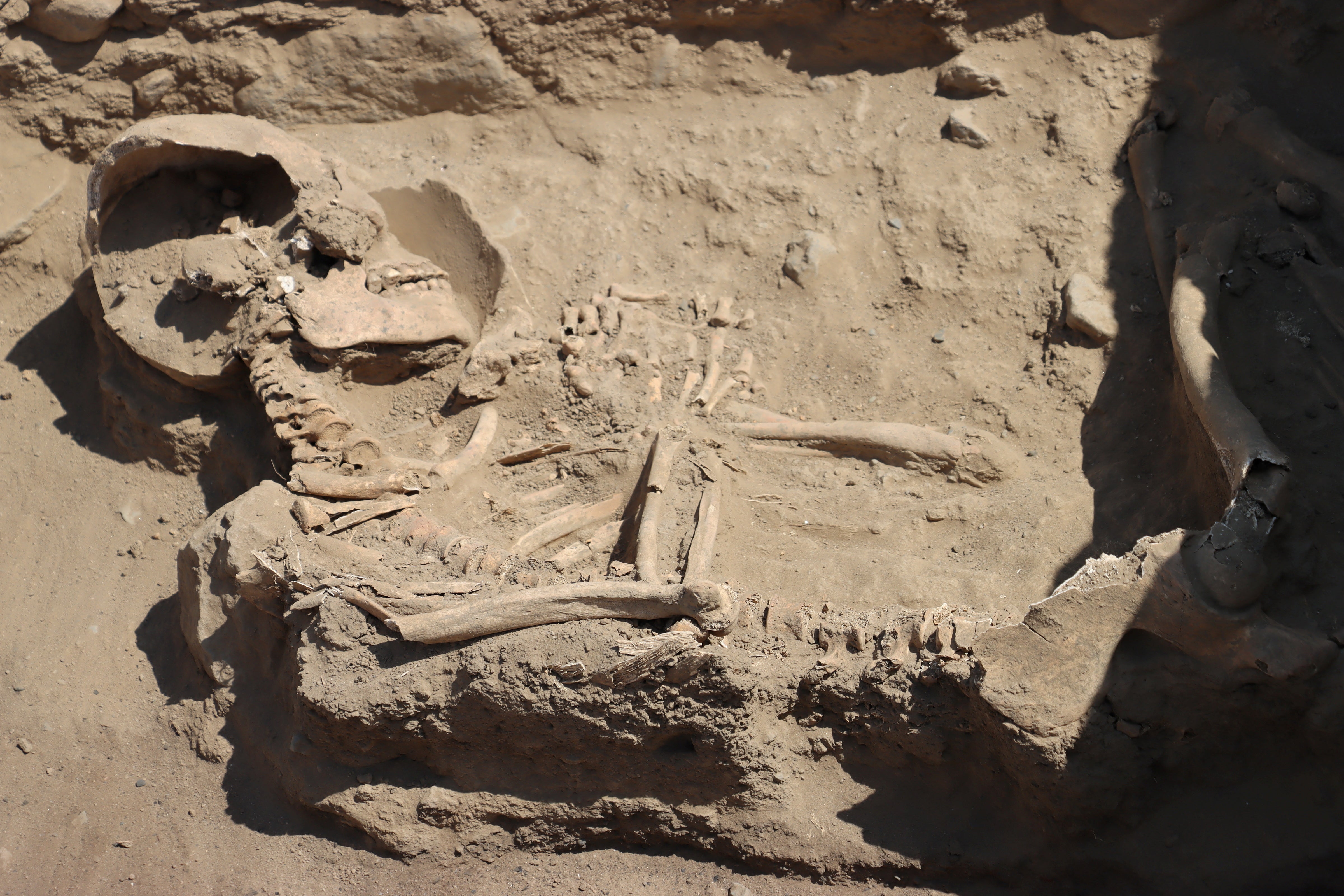Archaeologists unearth 3,800-year-old bodies in new clue to ancient culture
The funeral bundles were found nestled between some mud and stone walls near a valley

Your support helps us to tell the story
From reproductive rights to climate change to Big Tech, The Independent is on the ground when the story is developing. Whether it's investigating the financials of Elon Musk's pro-Trump PAC or producing our latest documentary, 'The A Word', which shines a light on the American women fighting for reproductive rights, we know how important it is to parse out the facts from the messaging.
At such a critical moment in US history, we need reporters on the ground. Your donation allows us to keep sending journalists to speak to both sides of the story.
The Independent is trusted by Americans across the entire political spectrum. And unlike many other quality news outlets, we choose not to lock Americans out of our reporting and analysis with paywalls. We believe quality journalism should be available to everyone, paid for by those who can afford it.
Your support makes all the difference.Archaeologists have unearthed four human remains believed to be more than 3,000 years old in a stretch of barren land in Peru that appears to have housed a ceremonial temple honoring gods of an ancient culture.
The funeral bundles were found nestled between some mud and stone walls near a valley in the dry, coastal Viru province in the South American nation’s La Libertad region, home to many major ancient cultures over the millennia.
Feren Castillo, an archaeologist at the National University of Trujillo in Peru who heads a research project in the area, said the remains and the walls were likely between 3,100 and 3,800 years old.

“This allows us to have a clear idea of the cultural evolution in this area,” Castillo said, adding that finding four remains in such a small space meant there could well be many more buried there.
“It also shows the importance of the space. People have for a long time wanted to be buried in temples because these are very sacred spaces to them,” Castillo added.

Peru, rich in archaeological sites of various ages, was home more than 500 years ago to the Inca empire that dominated a sprawling territory in the southern part of the continent from southern Ecuador and Colombia to central Chile until the arrival of Spanish conquistadors.
Researchers in La Libertad last month announced the discovery of the skeletons of 11 “high class” dating to 800 years ago. These were discovered near Chan Chan, the largest mud citadel in the Americas, built by the Chimu culture whose rule spanned swathes of Peru’s northern coast.
Join our commenting forum
Join thought-provoking conversations, follow other Independent readers and see their replies
Comments